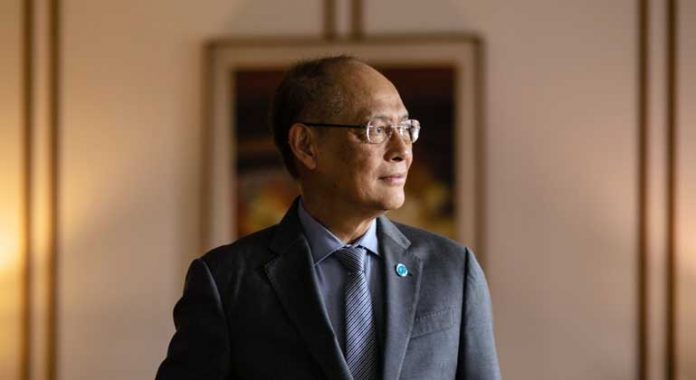THE CENTRAL BANK is considering analyzing internet articles and social media posts as a gauge of sentiment to boost policy making, Bangko Sentral ng Pilipinas (BSP) Governor Benjamin E. Diokno said.
The BSP’s economic research team is studying the use of text analytics to monitor uncertainties in financial markets, he said in a live-streamed briefing on Thursday.
“Integrating these indicators into economic surveillance allows for a comparative study of economic activities before and during the pandemic. This also enables multilevel analysis across major cities in the country,” Mr. Diokno said.
Policy uncertainty indexes are being developed by tracking down the frequency and combination of words over time, BSP Department of Economic Research Senior Director Zeno R. Abenoja said.
“The technique can also be used to scrape information and formulate indices from social media accounts. We look at possible indices on sentiment, again, also to gauge as a proxy for activity, even as we await the release of standard macroeconomic and financial variables,” Mr. Abenoja said.
“We hope that this will provide useful information to supplement and complement existing macroeconomic indicators as well as to further improve the traditional statistics that we generate for the Philippine economy,” he added.
The monetary authority has adopted mobility data from Google and Apple, Inc. in sectoral and growth analysis, said Mr. Diokno, who returned from medical leave.
While mobility indicators showed economic activity is still below pre-pandemic levels, the BSP chief said it has been “gradually closer to baseline” after dropping from March to April due to the lockdown.
“Mobility data offer much potential in providing inputs for policy making. Indeed, the adoption of these high-frequency indicators was particularly useful under the New Economy,” Mr. Diokno said.
Meanwhile, Mr. Diokno said they have requested the National Economic and Development Authority and the Philippine Statistics Authority to generate monthly unemployment data rather than quarterly data.
“Starting February, we will now have [monthly] data which to me is crucial for a developing country like us,” Mr. Diokno said.
The governor has earlier said they will remain accommodative by keeping benchmark rates low in the next quarters until the economy is back to its growth level of about 6.5% to 7.5% and unemployment is down to a 5% range.
The jobless rate in October stood at 8.7%, representing 3.813 million unemployed Filipinos. This already eased from the 10% unemployment rate in July and the record 17.6% in April. — Bloomberg with L.W.T.Noble

